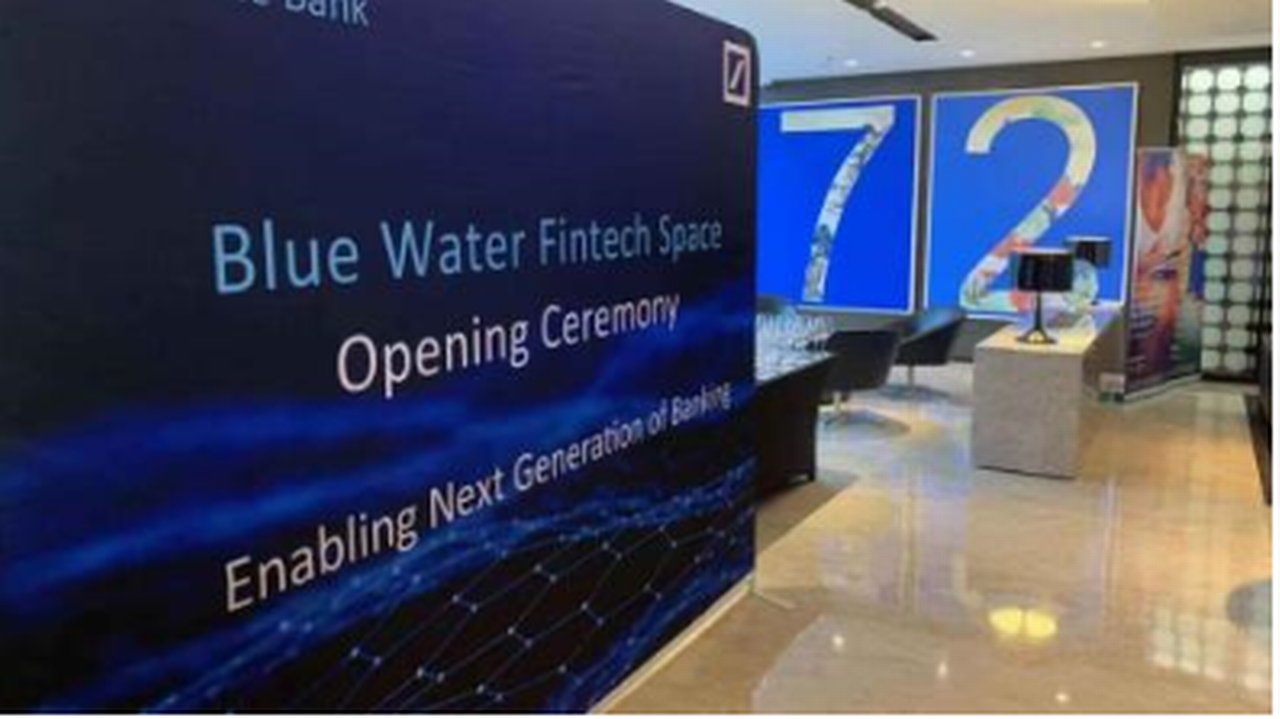September 2020
Treasury digitisation across Asia was gaining traction even before Covid-19 struck, but the pandemic has accelerated the process. A recent Deutsche Bank webinar provided a progress report.
The efficiencies that new technologies offer treasury management were clear long before coronavirus disrupted business life. However, lockdowns and the sudden shift to working from home this year promoted them from ‘nice-to-have’ to essential in maintaining operations.
The webinar ‘Shift for the future’ outlining treasury digitisation developments across Asia was presented by Deutsche Bank Corporate Bank on 21 August and was opened by Dirk Lubig, the Bank’s head of GTB, China. He began by outlining the bank’s framework for developing digital treasury solutions, which is made up of four basic ‘building blocks’:
- In-house innovation with projects driven within cash management, or in collaboration with GTB’s chief digital office
- Market partnerships via consortia engagements with Google, R3, Hyperledger, SWIFT gpi and USC among others
- Corporates co-innovation through partnerships with clients; for example a POC for a blockchain payments solution; and
- Deutsche Bank Labs/Blue Water Fintech Space, which provide a ‘sandbox’ environment for bringing fintech within the bank
These four main areas encompass the various new and emerging technologies of recent years, including artificial intelligence (AI) and machine learning; application programming interfaces (APIs); the Cloud and blockchain; cybersecurity; data analytics; fintech and robotic process automation (RPA) or robotics.

The Blue Water Fintech Space, Shanghai opened in September 2019
Lubig noted that Deutsche Bank’s Asia fintech innovation hub, the Blue Water Fintech Space in Shanghai marks its first anniversary this month. Launched on 11 September 2019, it aims to accelerate the Bank’s digital and innovatory offerings for its China clients and developing partnerships with local fintechs and the start-up community. The hub also aims to build on the concept of “innovation-as-a-service’.
Blue Water Fintech Space was established to achieve multiple objectives, said Lubig, although these can be grouped under three basic categories:
Connecting to China’s fintech and start-up community:
- Understanding the available technologies and solutions in the market
- Driving collaboration with fintechs through strategic partnerships, white labelling and equity investment
Understanding clients’ needs and developing ‘sandbox’ solutions in response:
- Utilising white boarding sessions to understand client needs
- Matching specific business problems or challenges to existing fintech solutions
- Acting as a ‘sandbox of ideas’ to test concepts and emerging technologies
Creating new DNA for Deutsche Bank employees:
- Driving change cultural change within DB’s organisation
- Empowering digital DNA to fit existing product gaps
- Evaluating AI- based solutions from initial idea to Proof of Concept
- Rewarding innovatory ideas and contributions
Four key Asia markets
Alvin Ho, who became Deutsche Bank’s head of corporate cash management for China in June this year, spoke next on the key digital transformation trends within treasury management across the four markets of China, India, the ASEAN member countries and regional hubs/North Asia.
Ho said that China is seeing a huge increase in the adoption of new technologies as a driver for greater financial inclusion. Mobile-based payments have become standard for consumers, while corporates are seeking out new payment methods as more transition from a business-to-business (B2B) model to a business-to-consumer (B2C) one. China’s treasurers are closely involved in tapping into the new payments and channels that could potentially drive the business model – particularly those with global aspirations that are moving towards e-commerce delivery channels. Banks have responded by working directly with fintechs to jointly build end-to-end integrated solutions that address treasury’s needs.
In India the government has been highly proactive in promoting fintech and developing a supporting infrastructure that includes the IndiaStack – a set of application programming interfaces (APIs) such as Aadhaar, the Unified Payments Interface (UPI) for instant payments, digital know-your-customer aka eKYC using adaptive biometric authentication, eSign and DigiLocker. These enable governments, businesses, start-ups and developers to utilise a digital infrastructure for paperless and cashless service delivery. India’s corporates are responding much faster in their adoption of APIs and other technologies
The impact on India’s treasurers is that they are having to adopt or work with the banks and fintech companies in order to implement mobile app-based solutions for payments, collections and reconciliations, as e-commerce is transforming the landscape.
The ASEAN (Association of Southeast Asian Nations) region comprises the 10 countries of Brunei, Cambodia, Indonesia, Laos, Malaysia, Myanmar, the Philippines, Singapore, Thailand and Vietnam, a “very fragmented market” said Ho and with a diversity of different regulation. The region’s digital economy is on course to reach up to US$240bn in value by 2025, effectively tripling in size and driven primarily by e-commerce.
Despite the disparities in local solutions, governments and ASEAN banks are driving for increased cross-border collaboration. The region is also seeing tie-ups between fintechs and payment service providers (PSPs) to build last mile capability, with last mile cash solutions provided through partner banks and ATMs.
Regulatory initiatives aim to further develop the region’s main financial hubs of Hong Kong and Singapore as regional hubs – for example for regional treasury centres (RTCs), while Apac’s mature markets, such as Japan and South Korea, are exploring emerging technologies to replace legacy market infrastructures, such as Japan with blockchain.
Baulking at digitisation
Ho said that much of the new technology such as big data and automated receivables is readily available and being used in the market, such as
- Big data enabling critical analysis;
- Integrated platforms allowing cross-bank accounts control;
- AI-enhanced automation allowing zero-error processing;
- Digital signatures easing pain of signing contracts;
- Automated helpdesks answering simple FAQs;
- Automated receivables matching facilitating STP.
Yet despite the process efficiencies and cost savings they can offer, in many cases corporate clients have yet to adopt new technology to solve their various treasury pain points and bottlenecks. While the reasons for procrastination vary among those often cited are concerns over internet privacy, a lack of commitment and/or funding; internal bureaucracy, regulatory restrictions, and interest undermined by lack of knowledge and risk averseness. “But we believe that this is something that we can really address to help treasurers and their departments move on to the next phase of the digitisation journey,” said Ho.
The vision is to give customers a single experience through one seamless end-to-end client journey that meets their specific needs and requirements. It requires being both an intelligent bank, able to predict what’s next for the customer seamlessly and also an immersive bank providing frictionless consistent customer experiences.
Xiong Yi, Cash Product Head for Greater China outlined the benefits of the Shanghai International Trade Single Window Solution introduced by Deutsche Bank China in June 2020. He described how making cross-border payments in China has typically been a lengthy, paper-intensive process with comprehensive document requirements, long turnaround times due to manual processing and much scope for human error. Deutsche Bank China has already responded by making a substantial investment in digital solutions to streamline the process – for example the client simply provides the customs declaration form (CDF) reference number and lets the bank do the rest of the work.
The Bank’s partnership with the Shanghai single window has enabled further efficiencies, simplifying cross-border payments to a five-step process initiated by the client submitting a payment instruction and balance of payments (BoP) reporting information, together with the CDF reference list number to Deutsche Bank’s e-banking platform (DBDI/Cash Manager). By leveraging its platform Deutsche Bank can retrieve the CDF information in full as a reliable data source that verifies the cross border payment before release to the payment house and the payment ultimately reaching the beneficiary(ies).
What are the eligibility requirements for enabling cross-border payments within the Shanghai Single Window? Currently they are as follows:
- Grade A under Goods Trade Classification by the State Administration of Foreign Exchange (SAFE)
- Declare imported goods through Shanghai Customs. While this is just Shanghai customers, Deutsche Bank is working to extend the solution nationwide as soon as possible
- Register in SH Single Window and select DB as payment bank
- Choose CDF as supporting documents, instead of invoice or contract.
Cutting cost and error
Alvin Ho returned together with Zhu Yi, the Bank’s Head of Innovation & Digital Solution, China and Daniel Pan, fintech and digitalisation expert on the topic of Digital Worker As-A-Service, which leverages the potential of robotic process automation (RPA). Corporates, financial institutions and other organisations are increasingly adopting RPA to simplify processes and create an automated back office processing without human interaction.
The aim of RPA is to reduce both cost and human operational errors by
- Enabling the automation and standardisation of routine transactions in a way that greatly reduces the human involvement in transactional activities
- Freeing-up resources to perform more value-add activities, improving morale and better utilising the skillsets of finance practitioners
- Shortening implementation cycles and increasing scalability in comparison with enterprise resource planning (ERP) overhauls and offshoring projects, thus improving the return on investment (ROI) and payback period
RPA solutions are already deployed in the treasury space for cash forecasting, cash positioning, e-market integration, bank data collection and distribution, cash accounting and reconciliation, report creation and invoice reconciliation. As treasury departments add greater amounts of data, at the same time they're working with increasingly lean resources and their reliance on RPA is greater than ever. Likewise, industry leaders have recognised that automation is a means to reduce the human involvement formerly needed for many transactional activities, offering significant cost savings and less risk of operational error.
Building robots, or ‘bots’, is only the start in achieving true value from RPA and experience suggests that companies focusing solely on bot development achieve only limited results. True value and impact depends on defining the right operating model and effectively managing the process, operations and employees involved in the automation. The targets at the end of this process are greater efficiency, improved quality and accuracy and a shift of resources to higher-value work.
Finance directors will focus particularly on the whole range of individual activities across the financial supply chain, identifying the processes that can benefit most from automation in achieving much higher levels of efficiency and accuracy, with RPA tools particularly suited to accounts payable and accounts receivable.
Fintech and digitalisation expert Daniel Pan concluded by offering three separate case studies of Digital Worker as a service, which he said can employ various combinations of RPA, AI, APIs and natural language processing (NLP) to leverage each of the technologies and position them to meet clients’ needs.
Go to Corporate Bank EXPLORE MORE
Find out more about products and services
Go to Corporate Bank Go to Corporate BankStay up-to-date with
Sign-up flow newsbites
Choose your preferred banking topics and we will send you updated emails based on your selection
Sign-up Sign-upSubscribe Subscribe to our magazine
flow magazine is published annually and can be read online and delivered to your door in print
You might be interested in
NEWS, CASH MANAGEMENT
Supporting corporate treasurers working from home Supporting corporate treasurers working from home
Deutsche Bank’s FX platform capabilities are helping corporates facing exceptional challenges triggered by the global pandemic – from maintaining liquidity to enabling employees to work from home
Cash management, flow case studies, Technology {icon-book}
Tomorrow’s treasury: what’s the role of real-time? Tomorrow’s treasury: what’s the role of real-time?
The vision of a “real-time treasury” has been around for several years now. But how do instant payments and access to real-time information really change the way treasury is managed? flow’s Desirée Buchholz hosts a debate on the role of real-time in the future of treasury
CASH MANAGEMENT
Resilient treasury factors in a lengthy pandemic Resilient treasury factors in a lengthy pandemic
Rapid changes to treasury strategy introduced in response to Covid-19 appear likely to endure as companies adjust to the pandemic having longer-term impact, the latest Economist Intelligence Unit survey suggests



